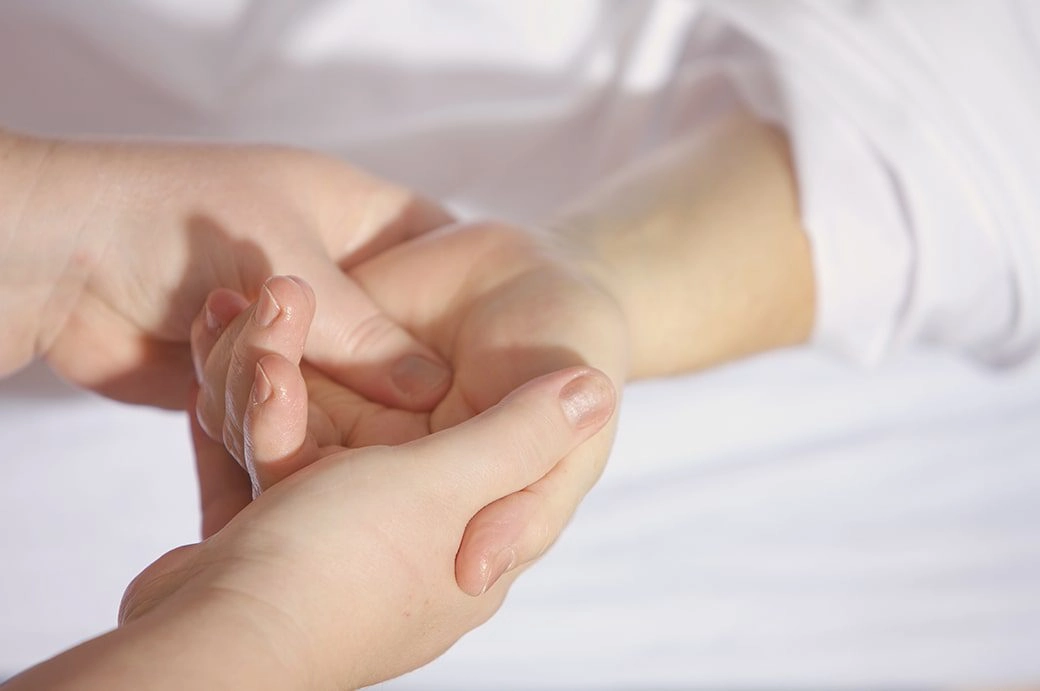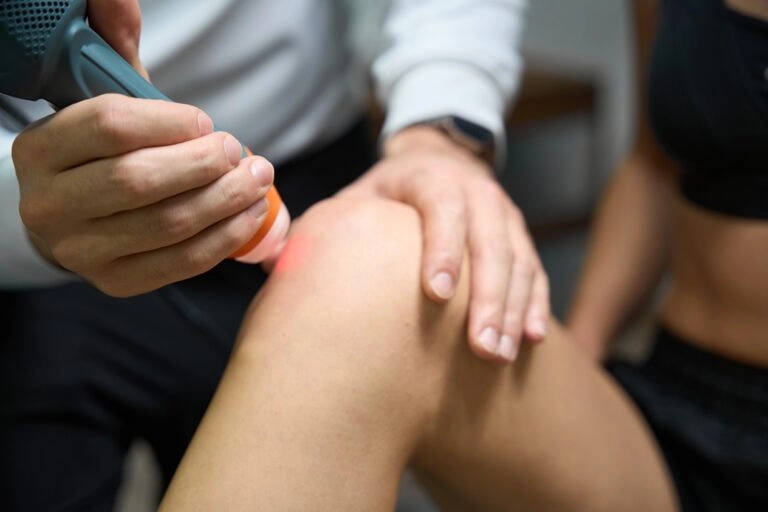If you have tingling or numbness in your wrist, hand, or arm, you may be a bit worried about the potential of carpal tunnel syndrome. Given our current culture’s obsession with scrolling, clicking, and using our hands and thumbs in somewhat unnatural ways on smartphones, tablets, computers, etc., the prevalence of carpal tunnel syndrome is increasing drastically.
It’s time to take some preventative measures if you have been feeling strange sensations in your hands (especially the index finger and thumb, or the palm of your hand). Tackling this problem early on can prevent painful complications in the future, including potential surgery. Read through some important information about carpal tunnel syndrome, and what you should be looking for in terms of symptoms, and then try to start integrating some of the preventative measures below into your daily routine.
What is Carpal Tunnel Syndrome?
Carpal tunnel syndrome is the medical term for a pinched nerve, called the median nerve, that passes through a narrow “carpal tunnel” passageway of ligaments and bones located at the base of the hand. This tunnel houses the median nerve, as well as the tendons that bend your fingers. The median nerve provides feeling in the index, middle, and part of the ring finger, as well as the palm near the thumb.
If anything compresses or inflames this nerve, it will cause tingling, numbness, and potentially pain in any and all of the areas mentioned above. It can also cause the fingers listed to bend in abnormal ways, but usually this symptom develops over time. Aside from the nerve itself, carpal tunnel syndrome is also classified as a compression of the carpal tunnel, causing the same symptoms.
There are so many different causes of carpal tunnel syndrome that it is actually virtually impossible to avoid, especially in our current society. Genetics, most work-related practices, injury, or other factors all play in as potential causes of carpal tunnel syndrome.
The best way to prevent carpal tunnel syndrome is to take action at the first sign of any trouble, and work preventative measures into your everyday routine. Here are some of the best, most effective preventative measures for carpal tunnel syndrome.
1) Take Breaks/Reduce The Pressure
At work, or when doing any repetitive movement (cooking, writing, drawing, typing, etc.), make sure to take frequent breaks from the motion. Carpal tunnel is more likely to develop if the nerves and muscles are put under intense strain for prolonged periods of time, so it’s important to take a break every hour or two to give your hands a break. It only has to be a few minutes of a break in order to be effective.
Along those lines, taking breaks is just as important as reducing the pressure with which we perform our everyday tasks. Often, we don’t even realize how hard we’re typing on a keyboard, which is completely unnecessary. We also don’t notice how tightly we’re gripping the steering wheel, or how much weight we’re carrying in our purses, briefcases, or other bags. All of this puts undue pressure on the median nerve and carpal tunnel, so reducing this wherever possible is a great way to prevent carpal tunnel syndrome from developing.
2) Avoid Repetitive Movements
Try your best to avoid repetitive hand or wrist motions in everyday activities. Many people have the misconception that repeating the same motion over and over again builds up some sort of strength or stamina, and while this is true for large muscle groups, it is not true for delicate areas of the body like the wrists and hands.
Obviously this isn’t always possible, so at the very least, try to switch the hands that you perform the task with, or try to space it out over the course of the day, taking frequent breaks and stretching your muscles as you go.

3) If You Can’t, Watch Your Form and Posture
Some people work in positions all day everyday that require repetitive movements. These include everything from cashiers, hairdressers, writers, sewers, construction workers, and more. It is common for people in these lines of work to contract carpal tunnel syndrome over time, but there are a few tricks you can keep in mind as you do this kind of work to prevent the progression of the condition.
Most importantly, make sure any pressure on your hands or wrists is as light as possible and distributed evenly. Often, this means keeping your wrists straight or very slightly bent, and using light tools if possible, or reducing pressure as outlined above.
Your overall posture is actually very important for preventing carpal tunnel as well, especially for people who type most of the day, or work on computers. Many people don’t realize the connection between your back and neck posture and your wrists, but they’re actually intricately connected. Poor posture (hunching over the computer, shoulders rolled forward, neck tilting forward) can cause nerves and muscles to become compressed and painful because they’re not in their proper alignment. If the nerves and muscles in your neck are compressed, it can run down your arms and affect your wrists and hands as well.
When working on a computer for most of the day, do your best to keep your spine straight, shoulders rolled back, and ears in line with your shoulders. Also make sure to see a chiropractor regularly to help maintain the integrity of your posture and correct any subluxations you may have developed.
4) Hand and Wrist Exercises/Stretches:
Doing hand or wrist exercises and stretches regularly can also reduce your risk of getting carpal tunnel. These activities can strengthen the area while reducing inflammation and making sure your circulation is functioning properly, allowing important nutritional fluids to make their way to the area.
Just a quick 5 minutes per day can make a difference, and it would make sense to do these activities when you’re taking a break from work, when you first wake up, before bed, etc. so that it becomes habitual over time.
Here are a few of the best stretches/exercises to prevent carpal tunnel:
- Make a fist, and then fan your fingers out and stretch them outward as far as you can. Slowly return back to a fist. Repeat 5-10 times.
- Hold your arm straight out in front of you. Bend your hand downward so your fingers are facing the floor (hold with your other hand if you’d like). Hold for about 15 seconds. Bend your hand the other way, fingers pointing toward the ceiling. Hold for another 15 seconds. Repeat on other side.
- Gently touch your thumb to each fingertip. Repeat 3 times on each hand.
- Bring your hands palms together in front of your chest, elbows out to the sides. If accessible, gently rotate your wrists out and away from your body as far as they will go, and then back toward your body as far as they will go. Make sure to do this slowly and gently, and stop if you feel any discomfort. Keep elbows out the whole time – the only thing that should be moving is your wrists!
5) Supportive Accessories
Finally, you may also want to consider integrating some supportive accessories, like wrist splints or keypad cushions, into your lifestyle. These tools can support your body in keeping your wrists and hands healthy, comfortable, and pain-free.
A wrist splint is helpful because it keeps your wrist in a straight, neutral position without you having to think about it. This reduces stress on the area, and absorbs some of the pressure/impact of everyday tasks on the carpal tunnel and median nerve. You can also just wear it at night in order to support it as you sleep and “train” it, in a way, to stay straight throughout the day.
There are also plenty of keyboard or computer cushions for your wrists on the market today, that would drastically reduce your chances of getting carpal tunnel syndrome if you do a lot of typing or computer work. They usually come as stick-on cushions that go beneath the keys on your keyboard so that you can rest your wrists and reduce stress on the area as you work.
There are also keyboards that you can hook up to your existing computer that are ergonomically optimized for typing all day. Check out soft touch mouses as well, especially if you use the mouse more than they keyboard at work. Holding a mouse all day in that unnatural position can exacerbate the symptoms of carpal tunnel almost as much as typing, so that is definitely a product worth looking into.
As you can see, there are plenty of things you can do in your everyday life that can prevent carpal tunnel syndrome. From wrist exercises, to lifestyle adjustments, to supportive accessories, there’s no need to worry about carpal tunnel syndrome as long as you’re being proactive about your care.









